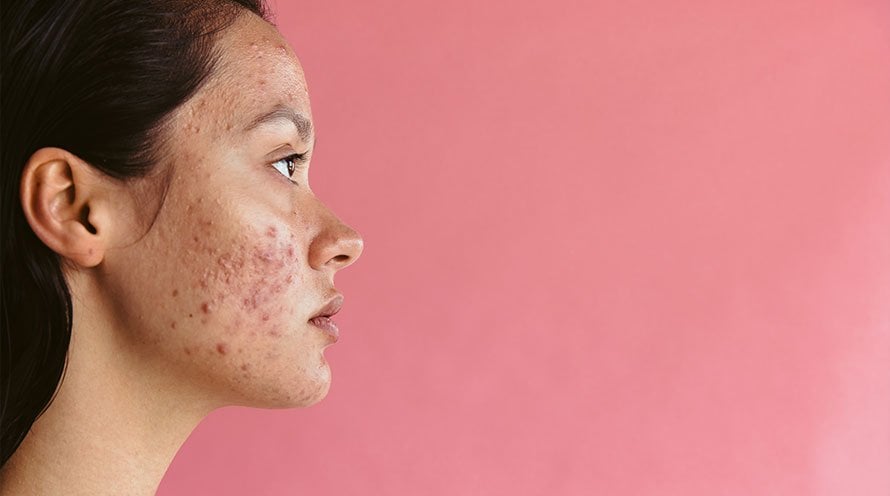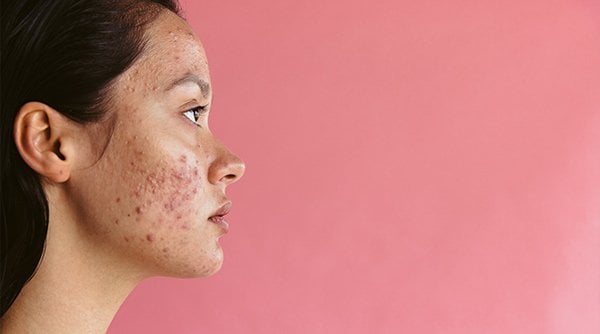How Your Diet Affects Acne Breakout
Acne is more common than you think and often goes beyond just skincare. You might be using the best products, but if your diet isn’t skin-friendly, breakouts can persist. One of the biggest yet overlooked triggers? Your food choices. In this article, we’ll dive into the acne causing food, how they affect your skin, and simple dietary swaps you can make to promote a clearer, healthier complexion.
What are some acne-causing foods to avoid?
• Processed Sugar - Triggers insulin spikes, excess oil, and inflammation.
• Dairy Products - May disrupt hormones and cause breakouts, especially on the jawline.
• Refined Carbs - Foods like white bread and pasta spike blood sugar, leading to acne.
• Fast Food - Greasy meals increase inflammation and worsen skin health.
• Alcohol - Dehydrates skin and disrupts hormones, making acne worse.
Top Foods That Trigger Acne
Many acne-causing foods increase insulin and androgen levels, which stimulate excess oil production. Combined with dead skin cells, this clogs pores and invites acne-causing bacteria to thrive. Food influences skin from the inside, so what you eat matters. While skincare matters, what you eat can directly affect your skin. Some common foods that cause acne promote oiliness, clog pores, and fuel inflammation. Let’s break down the worst offenders.
• Processed Sugar
Processed sugar-found in sweets, fizzy drinks, and cereals—spikes insulin levels. This leads to increased oil production and clogged pores, which can cause adult acne. It’s also a major inflammation trigger. Swap sugary snacks for fruits, nuts, or dark chocolate in moderation. This is one of the most prominent foods that cause acne.
• Dairy Products
Milk and dairy can increase Insulin growth factor-1, a hormone that triggers oil production. It may also affect hormone balance, causing breakouts. Try replacing regular milk with oat, soy, or almond milk for a few weeks and monitor your skin. Dairy is considered a common food that causes acne in many individuals.
• Refined Grains and Carbs
White bread, pasta, and rice are high-GI foods that spike blood sugar. This promotes oiliness and breakouts, especially around the forehead and chin. Opt for whole grains like oats, quinoa, or brown rice instead. These are acne causing foods that you can replace with healthier options.
• Fast Food
Burgers, fries, and fried snacks are loaded with bad fats and preservatives. These increase inflammation and throw your hormones out of whack, both of which fuel acne. Home-cooked, balanced meals are your best bet. Fast food is another common food that causes acne due to its inflammatory nature.
• Alcohol
While not a direct cause of adult acne, alcohol can dehydrate your skin and disrupt hormone levels. It also impacts liver detoxification, which can lead to dull skin and breakouts. Drink moderately and balance with lots of water. This makes it an acne causing food to monitor your diet.
Skincare Routine for Acne-Prone Skin
Here’s a beginner-friendly acne skincare routine that works for most acne-prone and sensitive skin types:
• Morning Routine
Gentle Purifying Facewash
Start with a mild, sulfate-free gentle face wash that helps clear excess oil without stripping the skin.
Lightweight Serum
Choose a lightweight Vitamin C Serum enriched with hydrating ingredients like niacinamide to brighten your skin and strengthen the skin barrier.
Gel-Based Moisturizer
A vitamin C gel moisturizer for oily skin is key to keeping your skin hydrated without clogging pores.
Sunscreen (Always!)
Use a broad-spectrum serum sunscreen SPF 50 PA++++, preferably a gel or fluid formula for oily/acne-prone skin.
• Night Routine
Double Cleanse (if wearing makeup/SPF)
Start with a cleansing balm or oil infused micellar water, followed by a gentle cleanser.
Serum
Depending on your acne type (inflammatory or non-inflammatory), use a night serum with ingredients like salicylic acid, etc.
Hydrating Moisturizer
Choose one that soothes the skin and supports overnight repair-look for ceramides or centella asiatica.
Sheet Mask (1–2 times a week)
Use masks with calming and anti-bacterial ingredients like green tea sheet mask to help hydrate and soothe your skin while keeping breakouts at bay.
When it comes to acne, what you eat can play a bigger role than you think. While everyone’s skin is different, reducing or eliminating common acne causing food like dairy, sugar, fast food, chocolate, and whey protein might lead to noticeable improvements over time.
You don’t need to overhaul your diet overnight. Start small track what you eat, pay attention to how your skin reacts, and make gradual, sustainable changes. Ready to glow from the inside out? Now that you know which foods that cause acne might be standing between you and clearer skin, it’s time to take charge! Make smart swaps in your diet and pair them with the right skincare. Dive into Garnier’s skincare products and expert-backed skincare tips to give your skin the love it truly deserves. Your journey to radiant, breakout-free skin starts here! Learn more about choosing the right ingredients for your skin with our skin care quiz.


